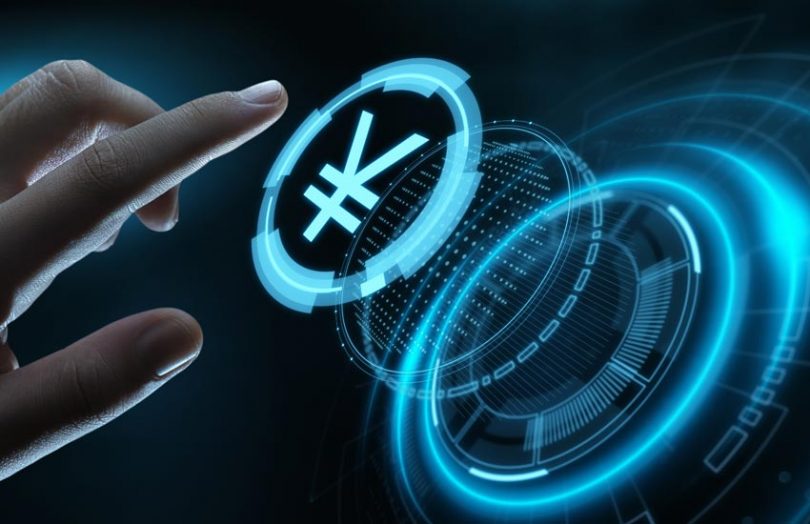Last week, Yao Qian, a Director at the China Securities Regulatory Commission (CSRC), wrote an article in Yicai in which he made a case for using blockchain in a central bank digital currency. He “proposes” a new kind of distributed cash digitization with the implication that each payment provider or bank could build its own system to manage the synthetic digital currency at the retail level.
China is in the advanced stages of developing a digital renminbi or DC/EP. Still, there have been conflicting reports about whether or not it leverages blockchain, with most saying it does not.
Qian points out that it is not a contradiction to use a decentralized blockchain for a digital currency controlled by a central bank.
To provide context, it’s known that the design of the digital renminbi involves a two-tier process with the central bank as the currency issuer and the commercial banks or payment companies providing onwards distribution to consumers.
Perhaps the most interesting point made related to cash digitization, which many don’t regard as a true digital currency.
Digitization of cash
Qian outlined the example of retail digital cash with payment providers depositing money at a central bank and issuing digital currency of equivalent amount to end users. This sort of synthetic CBDC can increase the complexity of the central banking system because it might require another clearing organization and is inflexible. The key point is that the issuance and circulation are tightly bound, and it’s hard for the central bank to ensure the amount of digital currency issued by the payments company is 100% the same if, for example, there’s a spike in demand.
This is a top-down approach with the central bank issuing a fixed amount of digital currency to the payment provider who passes it on to the consumer. If instead one looks at it from the consumer perspective, they are oblivious to the issuing process and are just interested in exchange or transactions.
Hence the better approach is bottoms up driven by the consumer. Using this route, a consumer pays money to the payments provider that exchanges it for digital currency and custodies it on their behalf. The payment provider passes the total money onto the central bank and gives them a batch summary update relating to digital currency. Hence there’s a two tier ledger, with the payment provider storing the details, and the central bank a summary.
Rather than doing this daily, to reduce risks, there may be a continuous net position adjustment and liquidity savings mechanism (LSM).
Qian outlined the advantages. Given the holder is in the driving seat and the cash can’t be transferred without their consent, this makes it similar to cash. The general public does not have accounts at the central bank and the CBDC system is independent of the RTGS system. Each provider can independently build their own digital currency operating system, creating competition. And because the digital currency is issued on demand and driven from the bottom, the digital currency total at the central bank will match.
The key takeaway is the central bank would not store the details but would have access to the payment provider’s detailed ledger if it needed to review it, giving them management and control.
While Qian positioned this route as a proposal, we wonder if this is not the DC/EP approach, as it sounds similar to other descriptions. There have also been comments about a race and competition. If payments firms can use their own technology for the last leg connecting to consumers, this explains the conflicting stories both about blockchain and “the race”.
Qian explored other blockchain use cases independently of the digital cash outlined above.
Registration and anti-counterfeiting
There still needs to be some centralized mechanism to check whether the CBDC issued is legitimate. In one model, a CBDC might have an issuance registration system that keeps track of the CBDC units, including any that are withdrawn and ownership records. A distributed ledger (DLT) is not used for the transactions, because a high volume of transactions would need to be processed and have instant finality. But once processed, the registration details are added to a distributed ledger.
However, the transaction addition is after the fact. Yao Qian refers to the tamper-proof and non-forgeable characteristics of the distributed ledger. But if we correctly understand the separation between the centralized system processing transactions and the recording on the ledger, then perhaps there is some potential for tampering before the addition to the DLT.
So why is the DLT used? Firstly, it means that the commercial bank records and the central bank’s records can be kept in sync. Qian references the “desensitization” of data. That means that the nature of the transaction is redacted and likely the user’s personal identity. This would certainly be for public queries, but potentially for other parties. Hence a distributed ledger is being used to filter the right to query data. And the public can confirm that the CBDC is not counterfeit.
An added benefit is the distributed ledger is used in this case to ensure consistency between the central bank records and the commercial bank records.
Wholesale payment settlement
The CSRC director outlined another use case by referring to trials done by numerous other countries for wholesale or interbank payment settlements. The central banks that have explored wholesale CBDCs include Canada,
Singapore, Project Stella by the ECB and Bank of Japan, and Thailand’s Project Inthanon.
Many of these involved something like Digital Deposit Receipts, wherein a ring-fenced balance at the central bank is represented on a distributed ledger. At the end of the day, the balance is adjusted based on the payments made via a distributed ledger. This can run alongside the main real time gross settlement systems (RTGS). And such a solution also enables easy remote supervision by a central bank.
It remains to be seen whether or not Qian’s ideas are proposals or designs China plans to use.







